Fall is here in Philadelphia and flowers are fading, but this Chrysanthemum plant is just coming into bloom. This one plant is attracting a nice array of pollinators, especially flies. In fact, in the last three days I have documented 15 species of flies pollinating the flowers. Fly species on these flowers outnumber all the other pollinator species I have observed combined: 4 bees, 2 beetles, 2 plant bugs, 1 wasp, 1 moth and 1 ant.
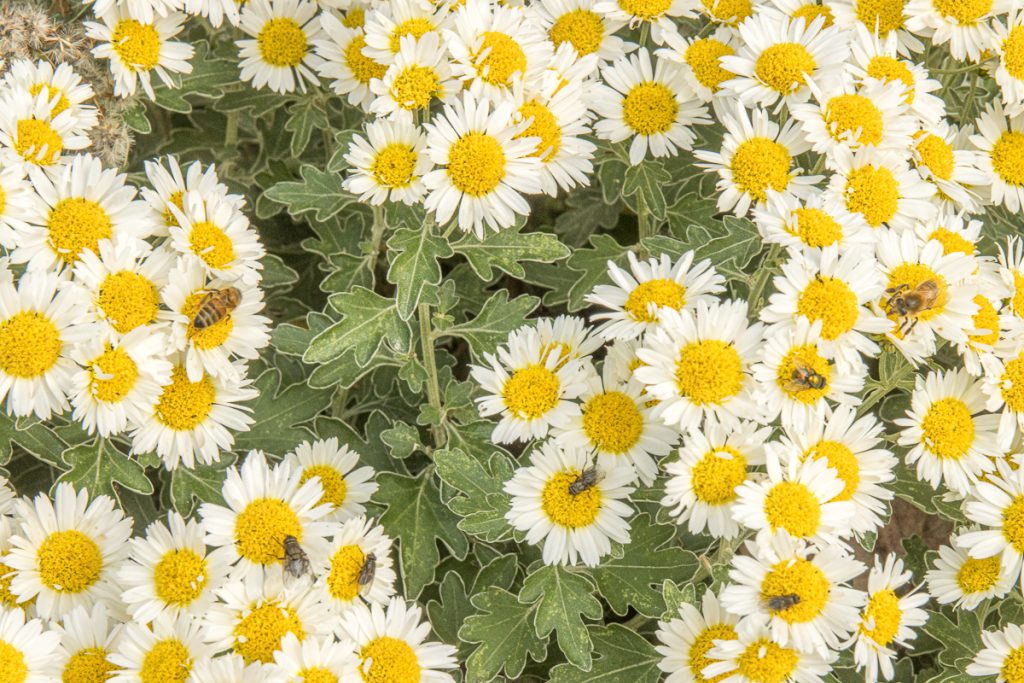
Generally I prefer native plants, but I appreciate what this cultivated daisy is doing for our flies.
Meet the flies:
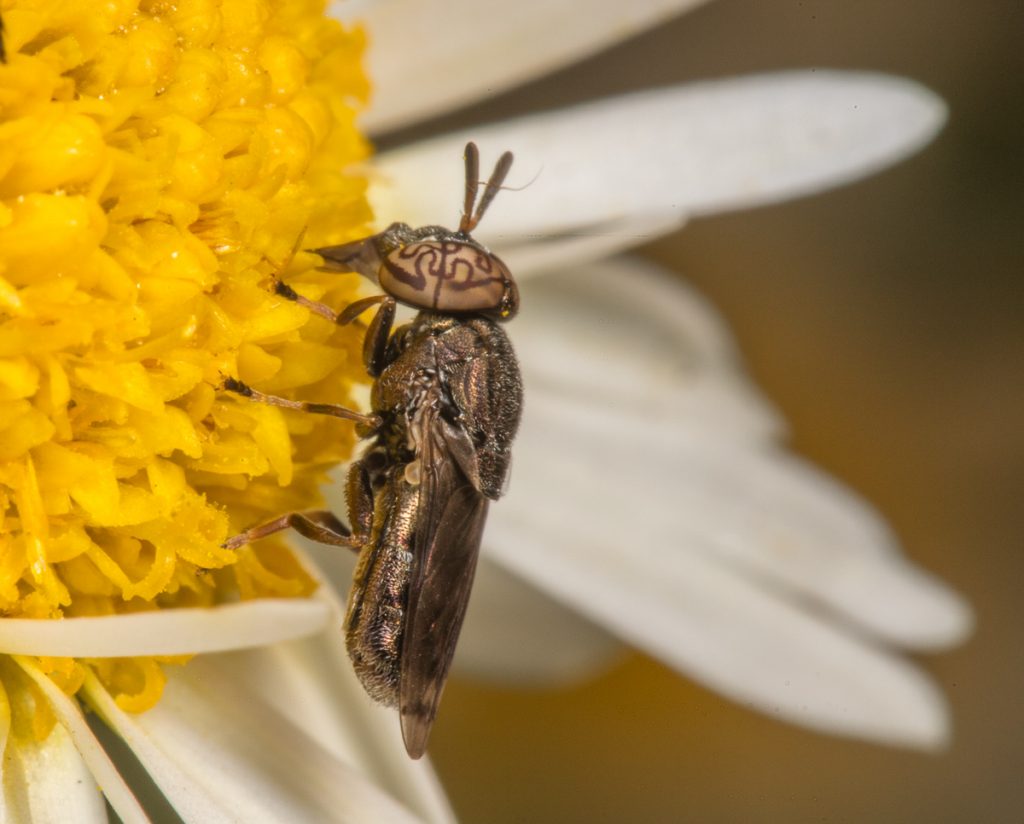
The Wavy Mucksucker (yes, that is its name) measures 4 mm long and is a member of the hover fly family.
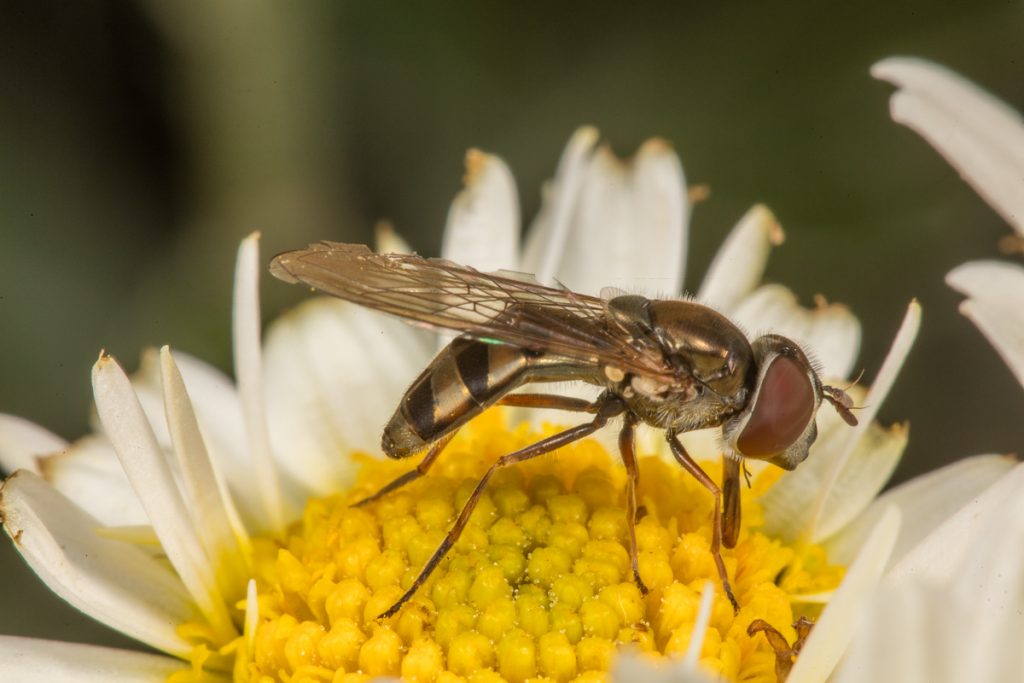
A Sedgesitter, another creatively named fly in the hover fly family.
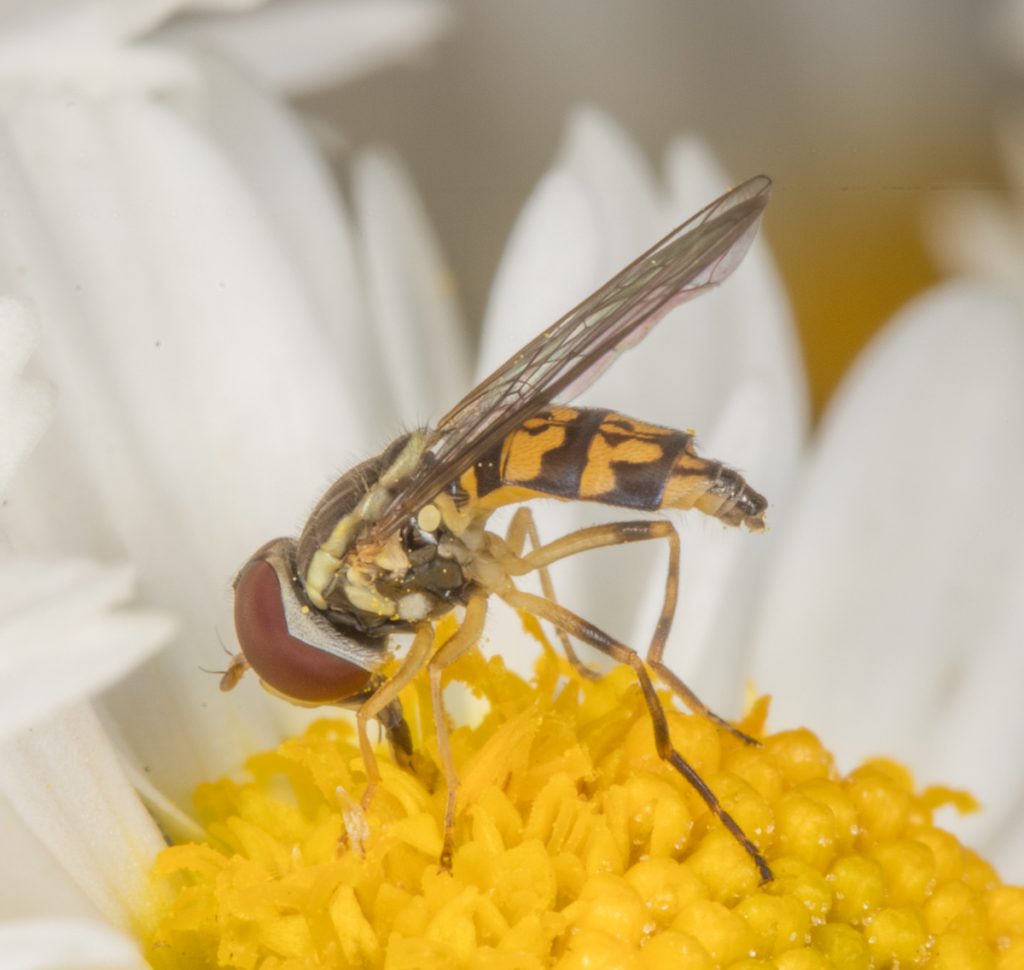
A Margined Calligrapher laps up nectar.
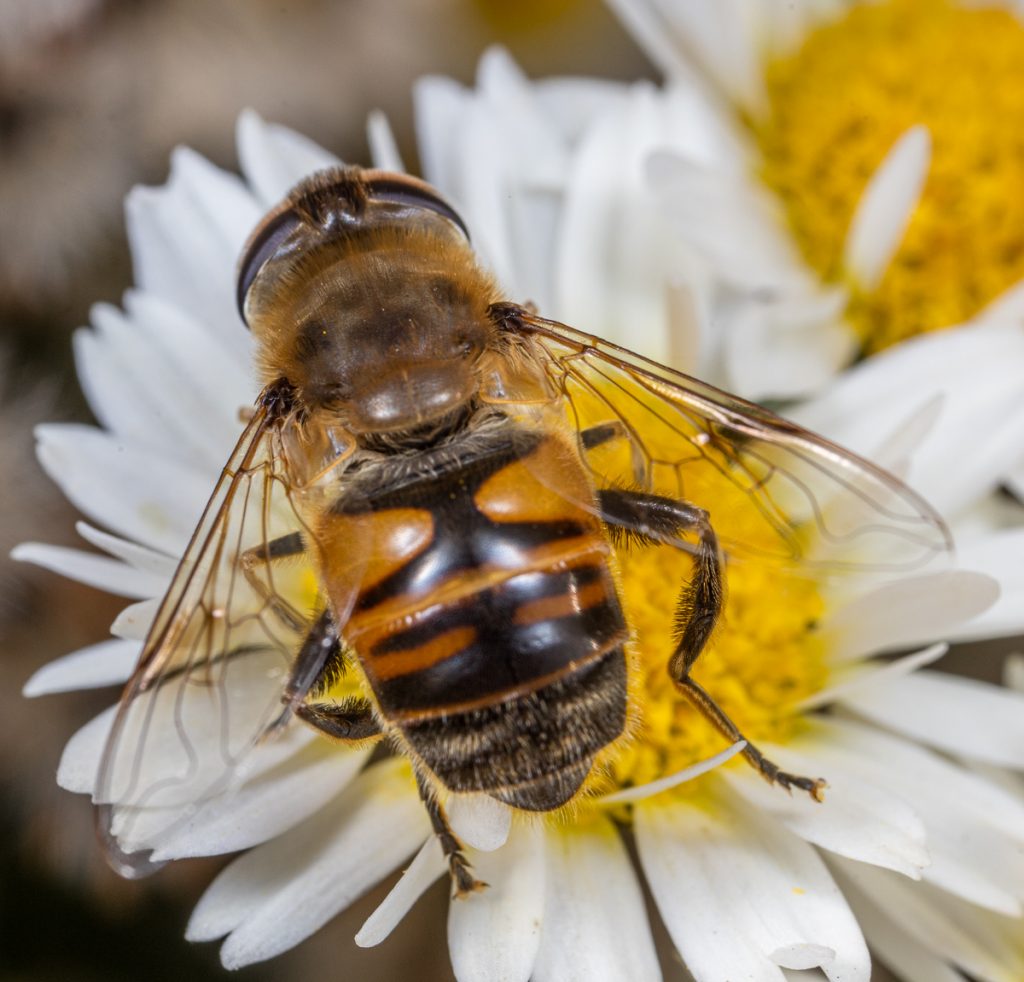
Common Drone Fly is an alien species now found around the world. It starts life in the water as a rat-tailed maggot. The tail is actually a snorkel which comes in handy since the water is often foul and oxygen depleted
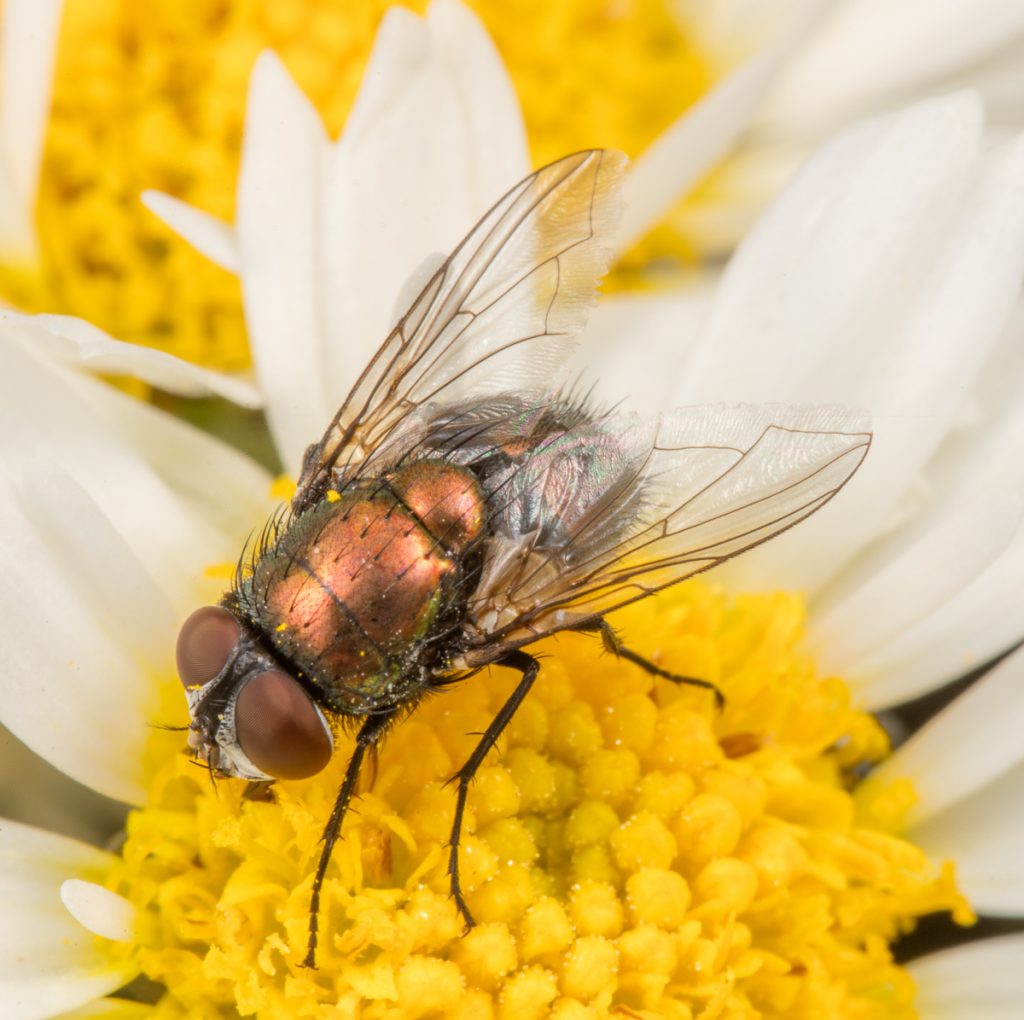
The ubiquitous Common European Greenbottle Fly. Weird name for a bronze-colored fly? They come in metallic green as well.

A member of the fruit fly family, Tephritidae, not to be confused with the “fruit flies” of the laboratory.
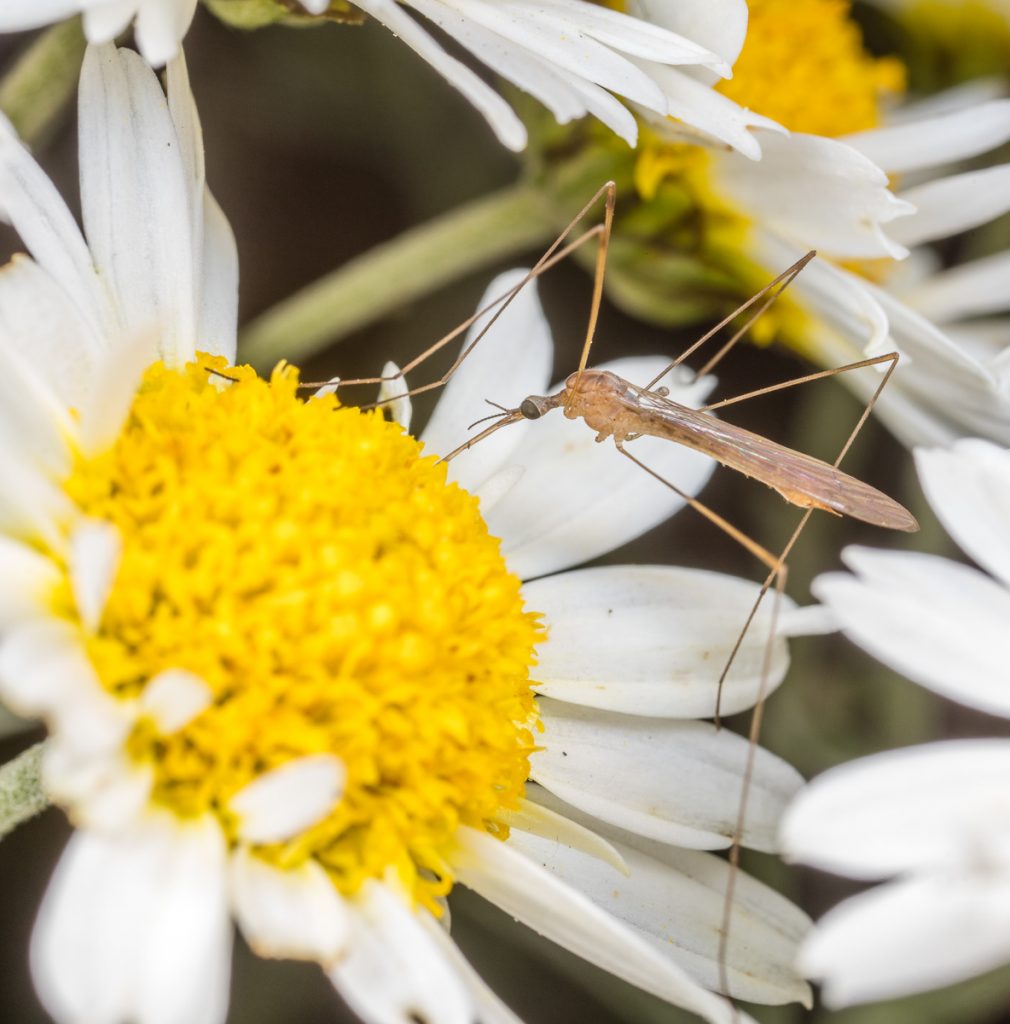
This little Limoniid Crane Fly uses its long proboscis to suck up nectar.

An unidentified species of the family, Lauxaniidae.
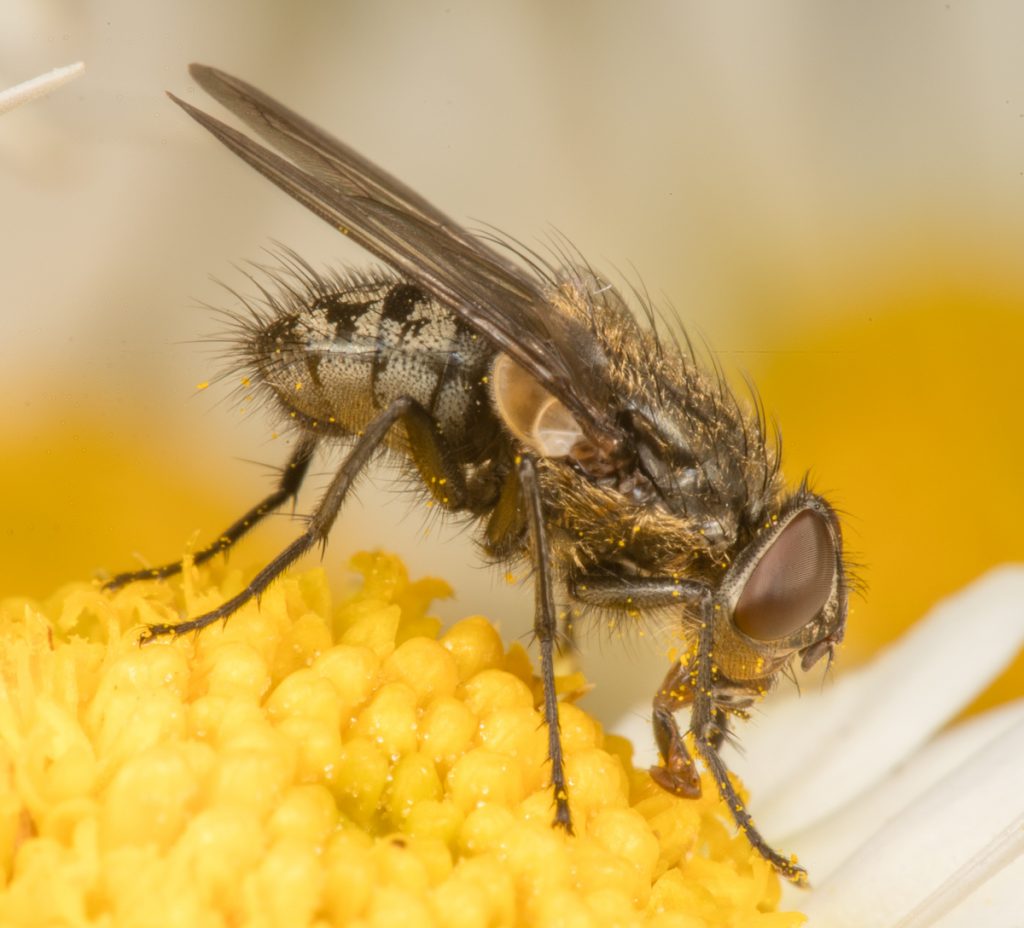
Cluster Flies are the most abundant species on these flowers right now. I have yet to see a cluster of these flies, but apparently they congregate in attics and the like.
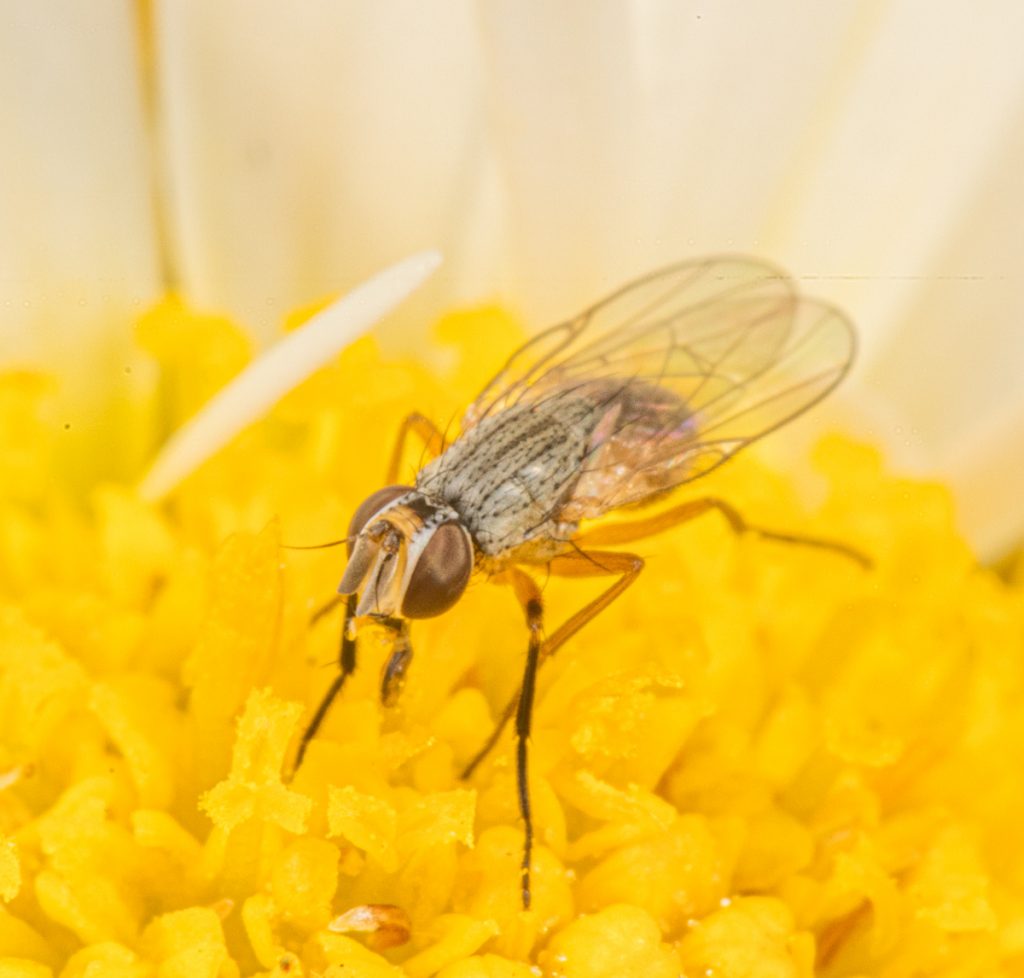
Another fly import, the Bermudagrass Stem Maggot was first noticed in this country in Georgia in 2010 and has since spread over much of the U.S. The maggots cause a great deal of damage in pastures as they burrow into grass stems.

An unidentified member of the Root-maggot Fly family.

OK, fly experts, I need help with this 2-mm fly. I don’t even know what family it belongs to.
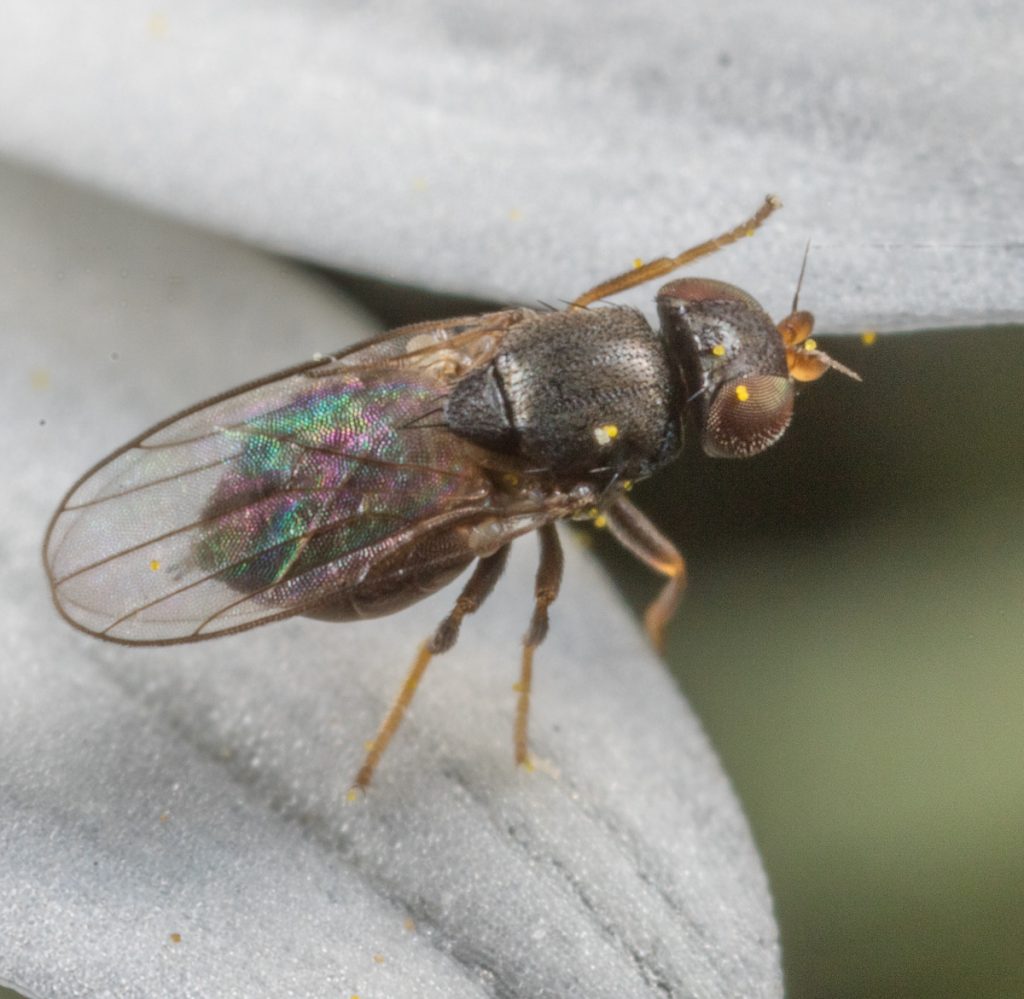
Possibly the same species as the previous one – unknown.

Last, and certainly least, this Minute Black Scavenger Fly is only 1.3 mm long and is best observed with a magnifying glass or macro lens. While the adults feed on nectar, the maggots have more unsavory tastes.
Amazing what a few flowers can bring to your garden!
P.S. In case you are counting, the 14th and 15th species of flies evaded my camera.
